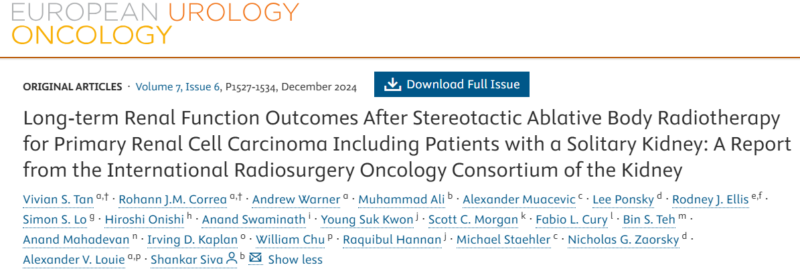In December 2024, a paper by Vivian Tan et al. was published in European Urology Oncology:
Authors: Vivian Tan, Rohann Correa, Andrew Warner, Alexander Louiea, Shankar Siva et al.

This study examined 190 patients (56 with a solitary kidney) who underwent SABR and were followed for a median of 5.0 years. At 5 years post-treatment, estimated glomerular filtration rate (eGFR) decreased similarly for patients with solitary and bilateral kidneys, with comparable dialysis rates of approximately 3.6-3.7%.
Key predictive factors for renal function decline included tumor size and baseline eGFR. The research concluded that SABR represents a promising noninvasive, nephron-sparing treatment option for patients with localized renal cell carcinoma, particularly for those who may not be ideal surgical candidates.
Pre-treatment characteristics showed minimal differences between solitary and bilateral kidney patients:
- Pre-SABR eGFR: 61.1 ml/min (solitary kidney) vs 58.0 ml/min (bilateral kidneys)
- Median tumor size: 3.65 cm (solitary kidney) vs 4.00 cm (bilateral kidneys)
Additional meta-analyses supporting these findings revealed:
- Local control rates of 97.2%
- Well-tolerated treatment
- Overall low toxicity rate of 1.5% for grade 3-4 complications.
More posts featuring European Urology Oncology.
